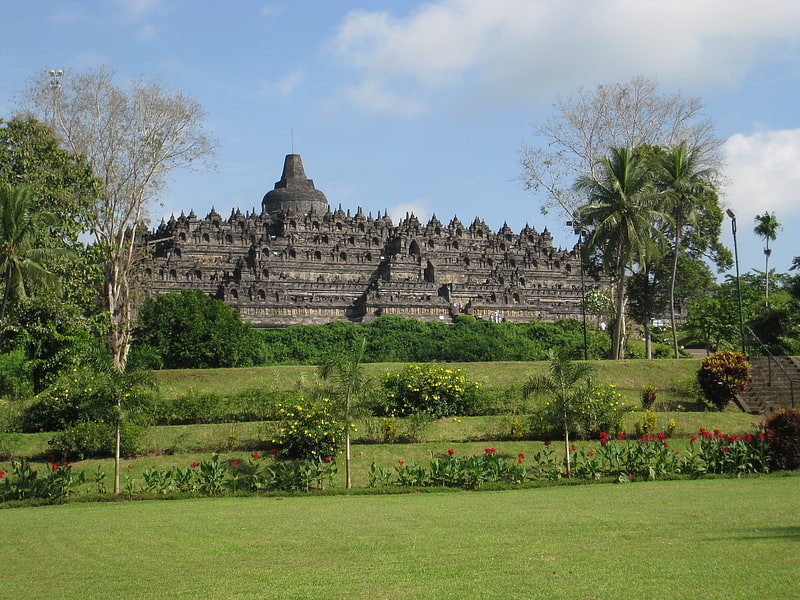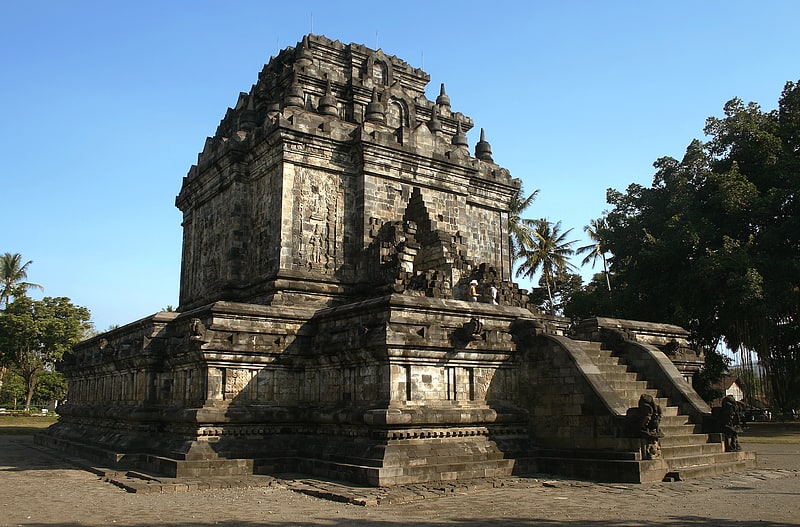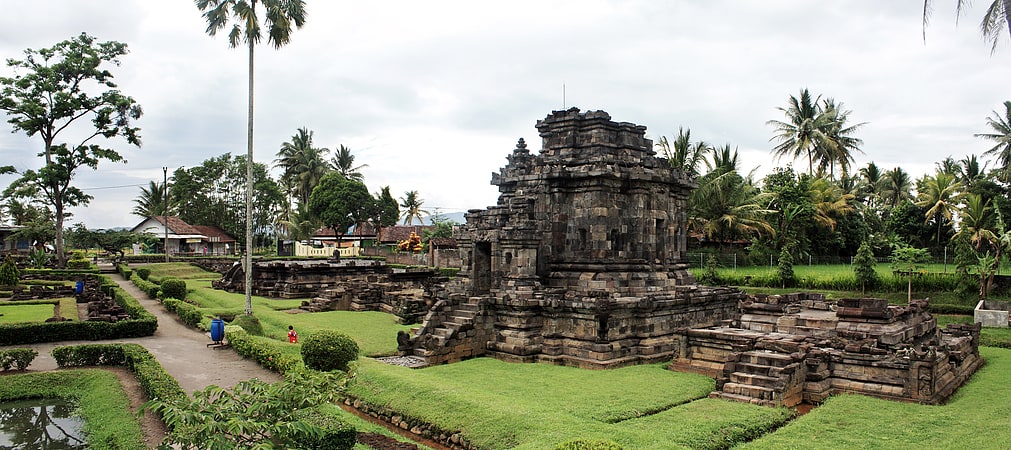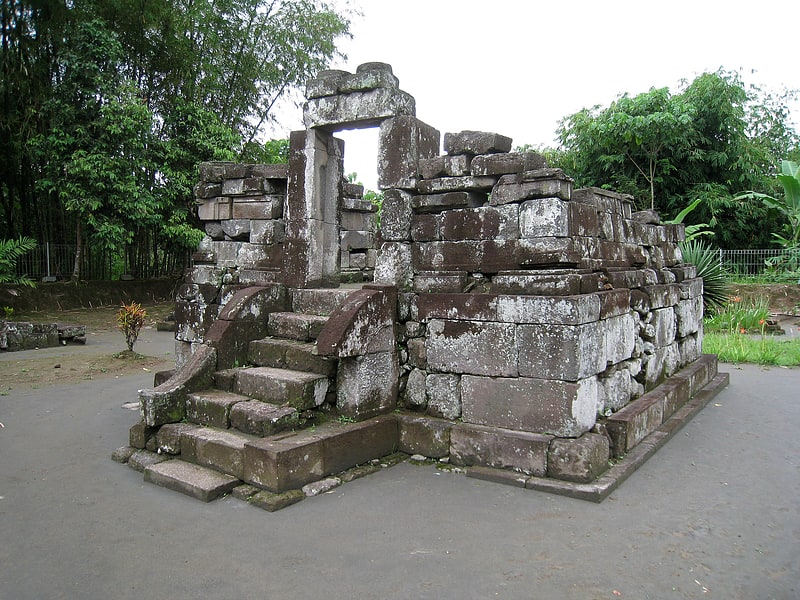Discover 5 hidden attractions, cool sights, and unusual things to do in Borobudur (Indonesia). Don't miss out on these must-see attractions: Borobudur Temple Compounds, Mendut, and Candi Ngawen. Also, be sure to include Gunung Wukir in your itinerary.
Below, you can find the list of the most amazing places you should visit in Borobudur (Central Java).
Table of Contents
Borobudur Temple Compounds

Borobudur Temple Compounds is the World Heritage designation of the area of three Buddhist temples in Central Java, Indonesia. It comprises Borobudur, Mendut, and Pawon. The temples were built during the Shailendra dynasty around the 8th and 9th centuries CE, and fall on a straight line.
Approximately 40 kilometres (25 mi) northwest of Yogyakarta, Borobudur sits on a plateau between two twin volcanoes, Sundoro-Sumbing and Merbabu-Merapi, and two rivers, the Progo and the Elo. According to local myth, the area known as Kedu Plain is a Javanese sacred place and has been dubbed 'the garden of Java' due to its high agricultural fertility.[1]
Address: Jalan Mayor Kusen, Borobudur
Mendut

Temple in Mungkid, Indonesia. Mendut is a ninth-century Buddhist temple, located in Mendut village, Mungkid sub-district, Magelang Regency, Central Java, Indonesia. The temple is located about three kilometres east from Borobudur. Mendut, Borobudur and Pawon, all of which are Buddhist temples, are located in one straight line. There is a mutual religious relationship between the three temples, although the exact ritual process is unknown.[2]
Address: Jl. Mayor Kusen, 56512 Magelang
Candi Ngawen

Buddhist temple in Ngawen, Indonesia. Ngawen is an 8th-century Buddhist temple compound in Magelang Regency, Central Java, Indonesia. Located in Ngawen village, Muntilan sub-district, 6 km to the east of Mendut temple or 5 km to the south of Muntilan town center. Ngawen temple compound consists of five temples, however today only one is successfully reconstructed.
Ngawen is thought to be connected with the other three Buddhist temples nearby — Mendut, Pawon and Borobudur — all of which were built during the Sailendra dynasty (8th–9th centuries). According to the satellite map observation, the four temples; Borobudur, Pawon, Mendut and Ngawen are actually forming a straight line spanning west to east slightly tilted northeast with eastern end pointing to the peak of Mount Merapi. From the detail and style of its carving, this temple is estimated to be slightly older than Borobudur. The temple is notable for its exquisite statues of rampant lions on each corners of the temples. Since its discovery in 1874, the temple has suffered looting and artifact theft.[3]
Address: Ngawen, Muntilan, 56411 Kota Magelang
Gunung Wukir

Hindu temple in Salam, Indonesia. Gunung Wukir temple, or Canggal temple, or also known as Shivalinga is a Shivaite Hindu temple dated from the early 8th century, located in Canggal hamlet, Kadiluwih village, Salam subdistrict, Magelang Regency, Central Java, Indonesia. The temple dates to the year 732, making it the first structure attributed to the ancient Mataram kingdom, which ruled Central Java from 732 to around the middle of the tenth century.[4]
Gereja Ayam

Tourist attraction in Indonesia. Gereja Ayam is the common nickname for an unusually shaped church in the area of Magelang in Central Java, Indonesia. The nickname, which translates to "chicken church" in English, arose because the structure's shape resembles a hen to most onlookers, although the builder intended it to be the shape of a dove.
The building was erected during the 1990s by Daniel Alamsjah, who claimed to have been inspired by God to build a prayer house through a dream he had in 1989. Alamsjah is Christian, but envisioned Gereja Ayam as a place to welcome followers of any religion for prayer or meditation.
Due to financial difficulties and local resistance, the construction was never finished. The construction was halted in 2000 and the building has since largely been left to deteriorate. In spite of this, in recent years the place has become reasonably frequented by tourists, as well as by couples seeking either to take wedding photographs or to be wed in the building. Besides serving in a religious capacity, the building has also been used to rehabilitate disabled children or drug addicts, or as an insane asylum. Following depictions of the site in several films over the past decade, the church has achieved a level of fame and is now a tourist attraction.
The documentary Into the Inferno from 2016 devotes a segment to the church. It argues that the church was intended to have a connection with a local volcano, as the head of the dove points in the direction of the volcano.[5]
Address: Kembanglimus, Borobudur, Magelang, Central Java 56553, Borobudur